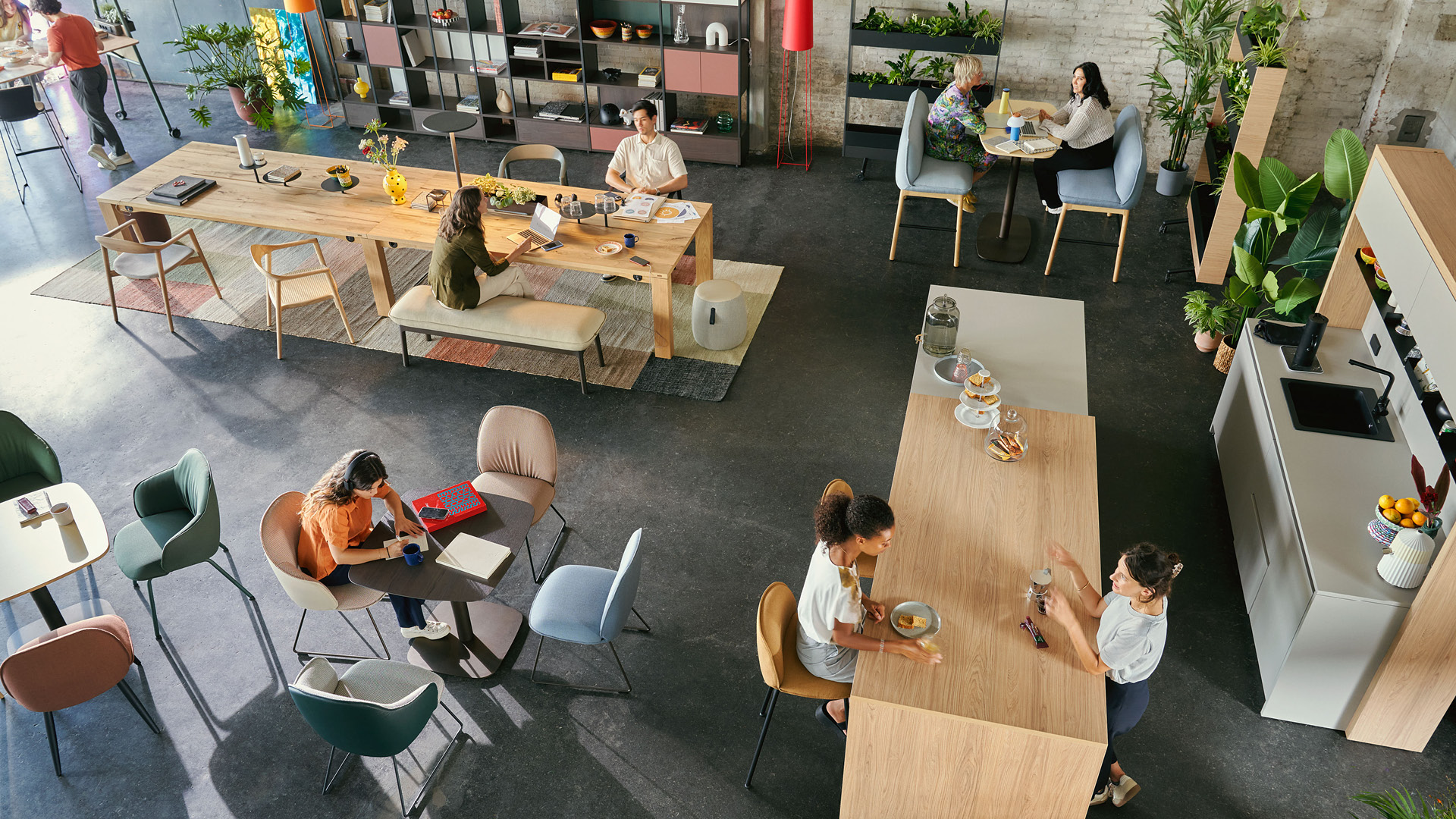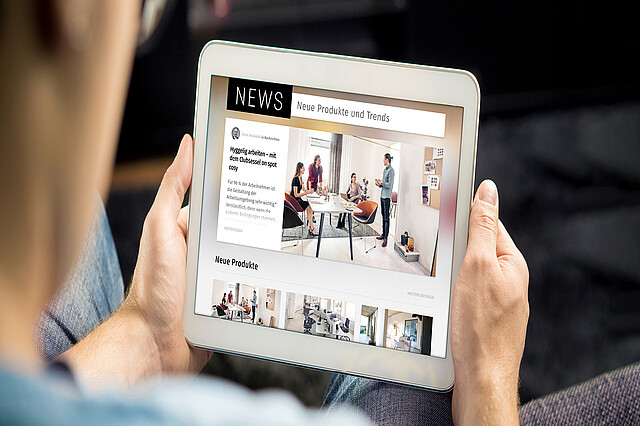The advantages of different work locations
There are various work locations that employees can choose from these days. Each of these locations offers specific benefits that contribute to productivity, satisfaction and work-life balance:
Working from home
Working from home or mobile working offers a number of advantages, in particular flexibility and a better work-life balance:
- Time saving: No commuting times, which allows more time for work or personal activities
- Flexibility: Possibility to adapt working hours to personal needs
- Comfort: Working in a familiar and comfortable environment
- Cost savings: Reduced expenses for travel costs, meals and work clothes
- Improved work-life balance: Easier integration of work and private life
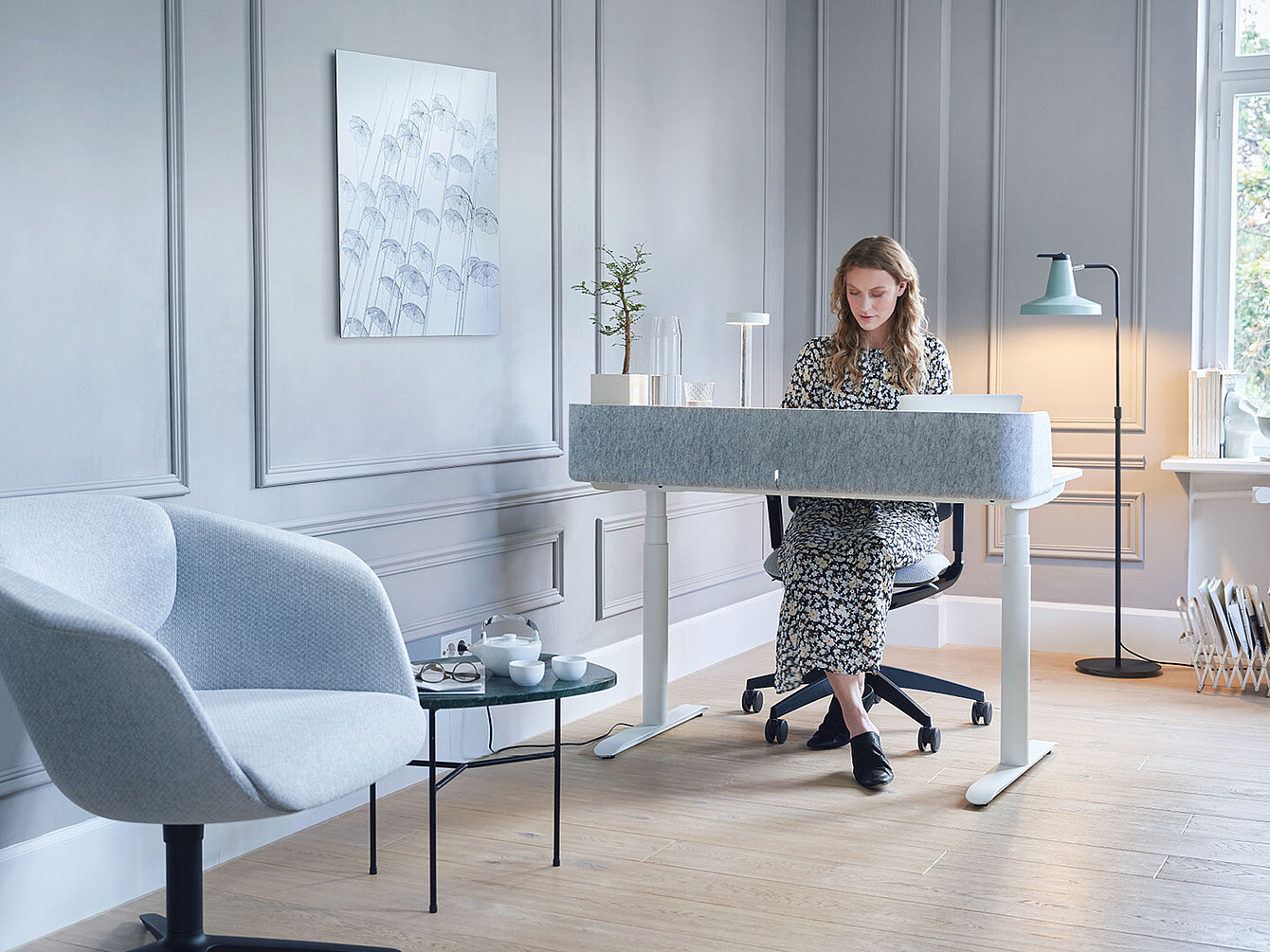
Working in the office
The classic office scores positively with structure, personal interaction and optimum working conditions for teamwork:
- Structure and routine: Clear separation between work and private life, which can help to structure the working day
- Social interaction: Direct contact with colleagues promotes teamwork and social relationships
- Resources and equipment: Access to specialised equipment, resources and an ergonomically designed working environment
- Mentoring and networking: Easier opportunities for professional development and networking
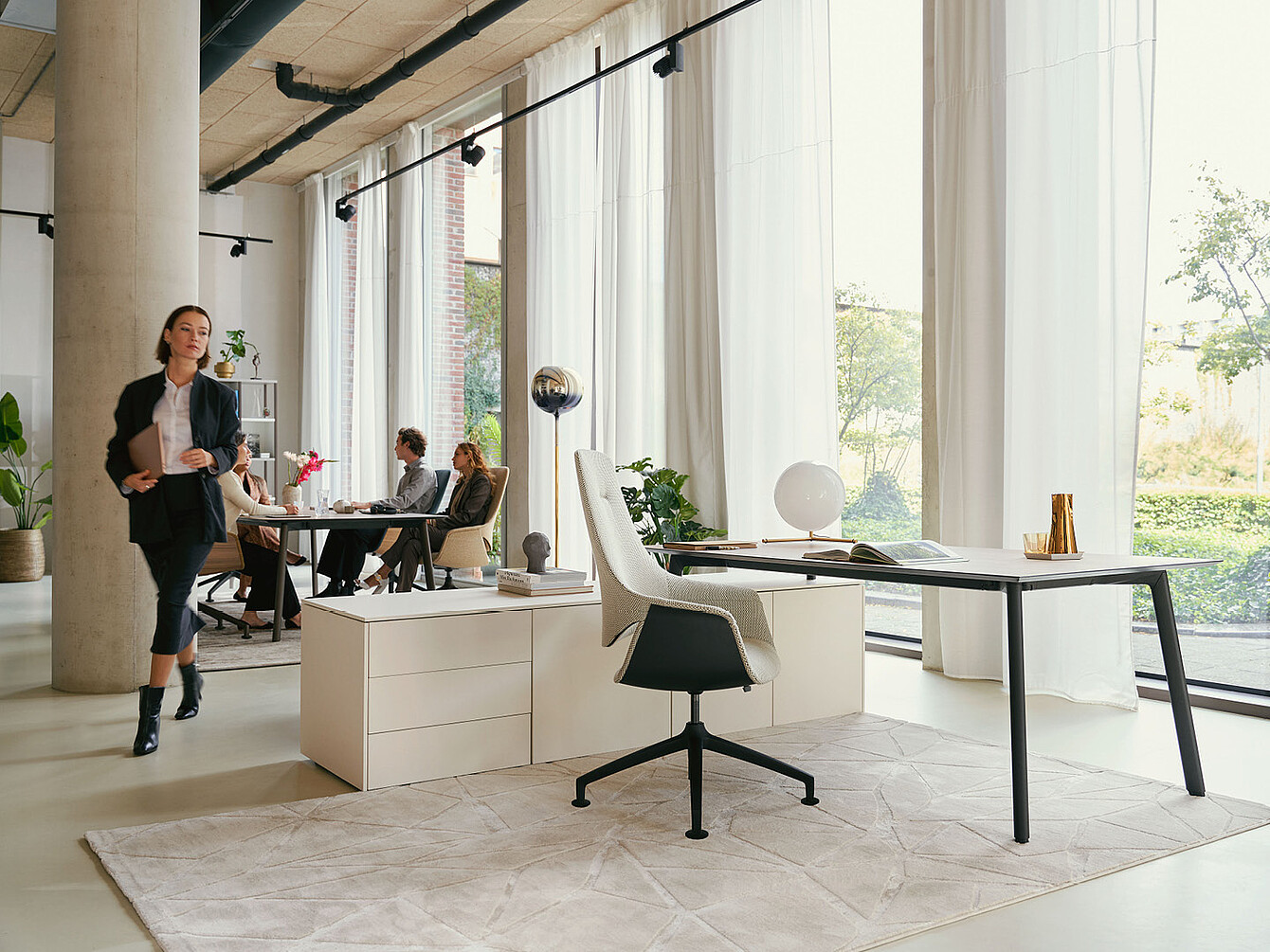
Co-working spaces
Co-working spaces combine flexibility with an inspiring community and offer ideal conditions for creative and interdisciplinary collaboration:
- Flexibility and scalability: Possibility to rent workstations as needed, without long-term commitments
- Networking opportunities: Interaction with professionals from different industries can lead to new business relationships and co-operations
- Community and motivation: Working in a collaborative environment can be inspiring and motivating
- Infrastructure: Access to high-quality office equipment, conference rooms and shared facilities
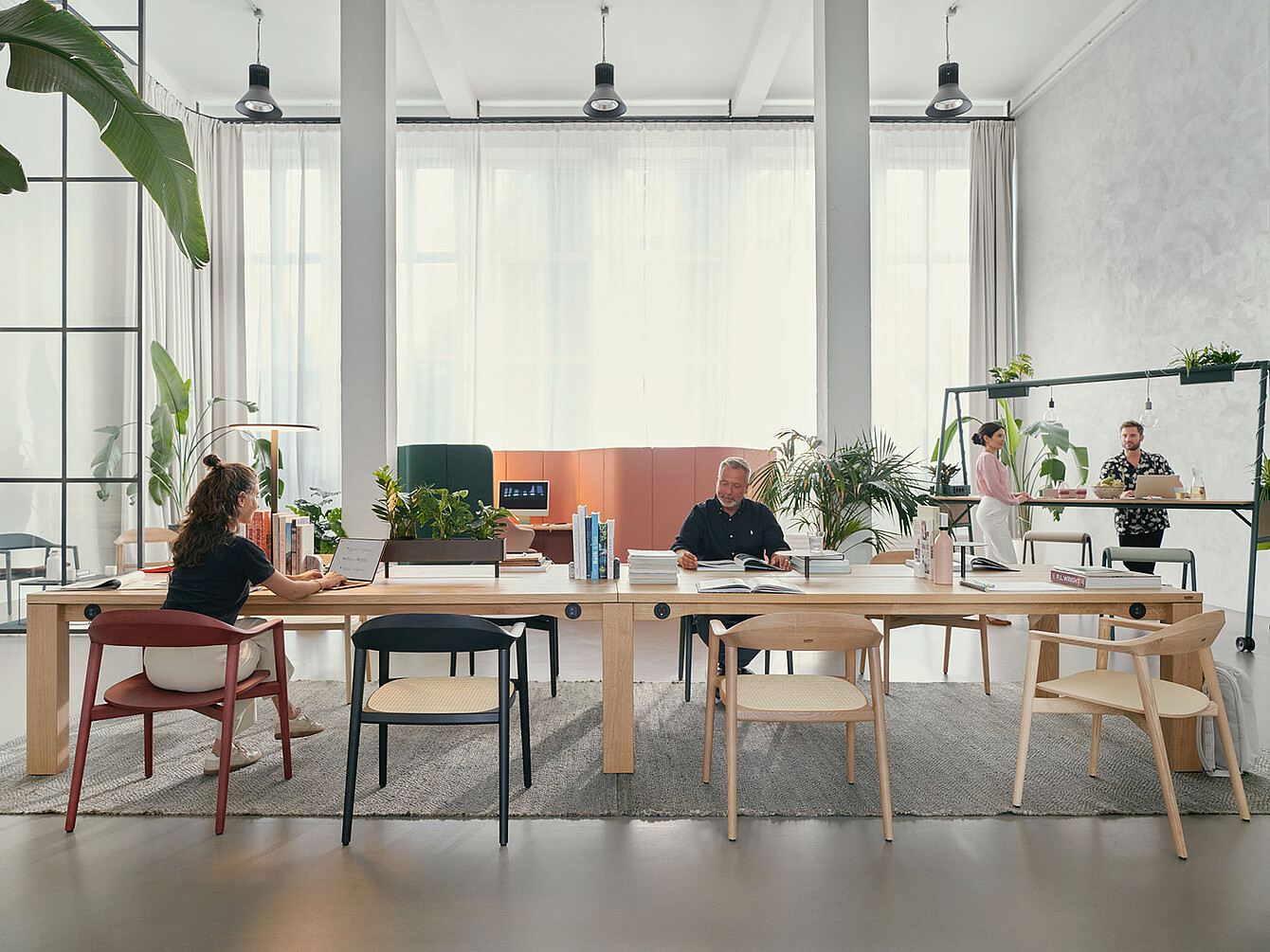
Third places (e.g. cafés, libraries)
Whether in a café or in the library - alternative workspaces bring a breath of fresh air into everyday life and encourage new ideas:
- Variety: Changing the environment can increase creativity and productivity
- Flexibility: Possibility to spontaneously adapt working hours and locations
- Social atmosphere: Working in lively environments can create a sense of community and prevent isolation

Mobile and on the move (e.g. on the train, in the park)
People who work on the move use their time particularly efficiently and benefit from a high degree of flexibility and changing environments:
- Location independence: The ability to work from anywhere promotes better utilisation of travel time
- Inspiration through environment: Working in different environments can foster new perspectives and creative ideas
- Flexibility: Offers a high degree of flexibility, especially for professionals who travel a lot
Digital rooms (virtual offices)
Virtual workspaces open up completely new possibilities for collaboration - regardless of time and place:
- Location independence: Complete independence from physical location
- Flexibility in time management: The option to work asynchronously promotes individual productivity
- Cost savings: Reduced costs for physical office space and infrastructure
- Collaboration across distances: Easy integration and collaboration of teams from different geographical regions
The choice of work location depends on individual preferences and the specific requirements of the job. While working at home or in the office offers structure and routine, co-working spaces and third locations allow for flexibility and variety. Digital spaces and mobile working offer a high degree of independence and promote the integration of modern technology into everyday working life.
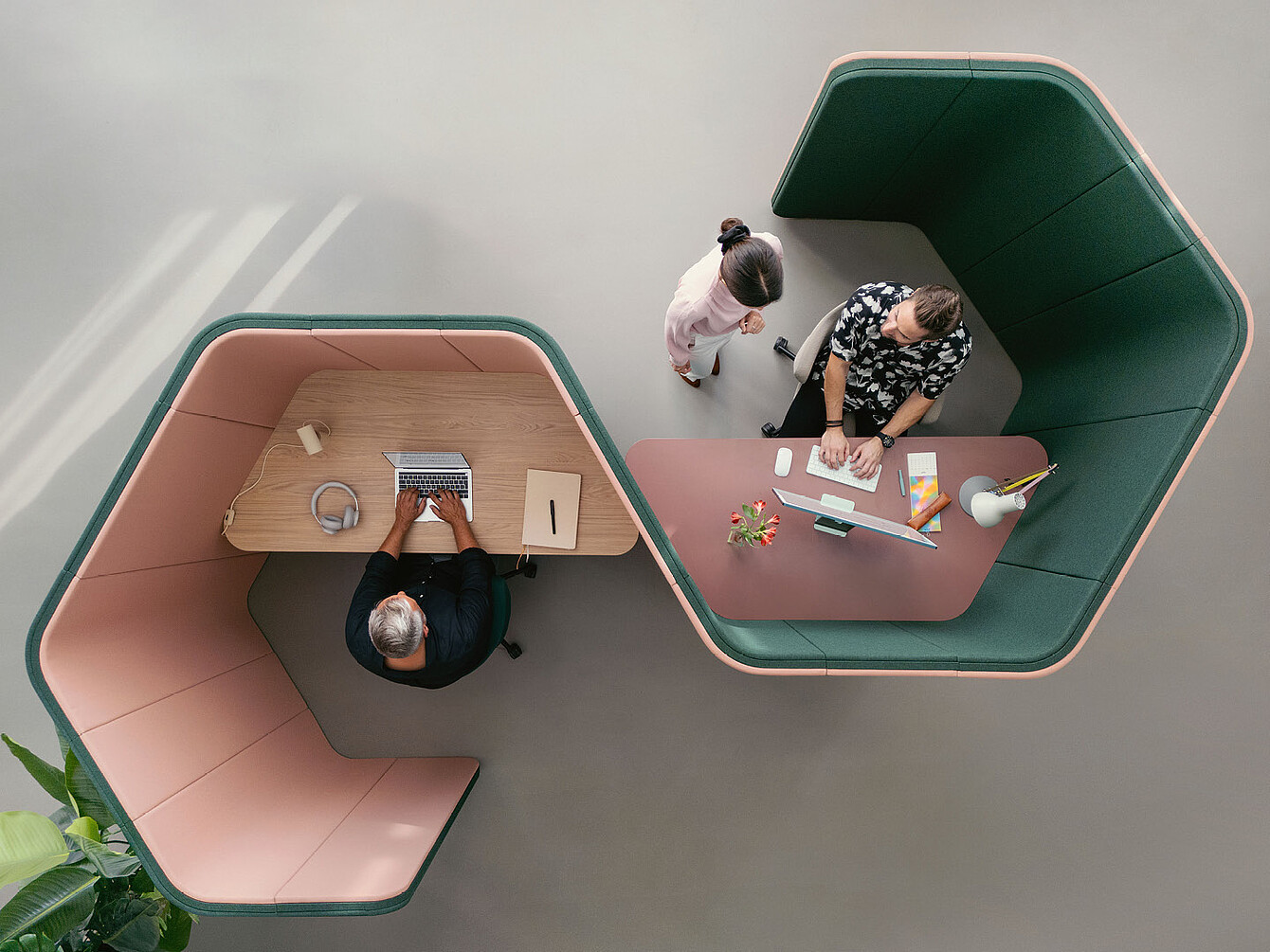
The "distributed office" - between physical locations and digital worlds
One way for companies to combine different work locations is the "distributed office" model. It views the workplace as an ecosystem of places made up of the traditional office, living spaces or third places and the digital space. The digital aspect characterises the distributed office the most, because here technology is not just a means of communication, but a real digital space.
As a multidimensional space, the "diffuse office" is suitable for utilising the effectiveness of a dynamic workforce. We know from experience with remote working that a physical workspace can be anywhere. The exponential increase in the use of video conferencing platforms has enabled many organisations to imagine a different way of working online, to be close to colleagues even when they are far away, and to transform business meetings.
With the freedom to choose where to work, offices and the new digital space will become places of communication and collaboration, opening up new scenarios of the future office as a place for discussion, knowledge sharing, continuous learning and the cultivation of a community spirit among employees. On the other hand, private spaces remain the favoured places for concentrated work and for moments of real relaxation.
With its ‘three rooms’, the distributed office forms a functioning ecosystem that enables companies to adapt to the changes that are taking place.
social media channels:
